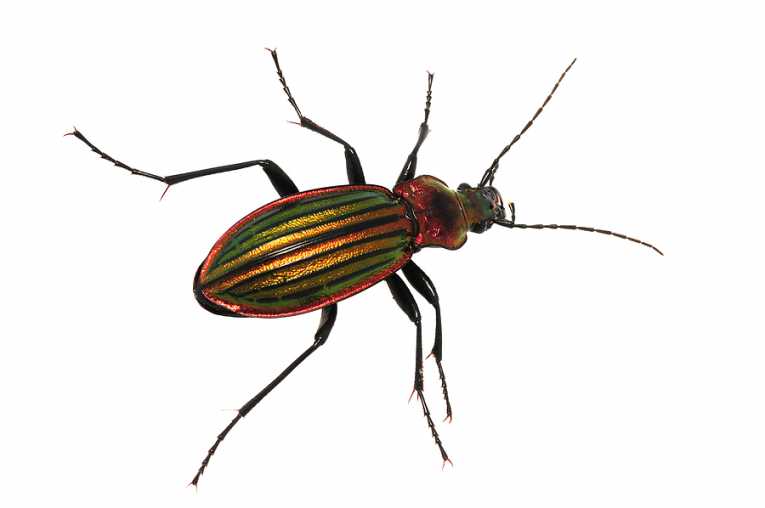Beetles are among the most numerous, diverse and therefore successful groups on Earth. Gil Wizen of Tel Aviv University has proved yet again that zoology has its uses. Generations of horror movie directors will feed off the concepts released from his research on Ground Beetle larvae and their toad prey.
The classic instance of predators stalking their live and not-so-innocent food supply is reversed with the prey waiting to be stalked by the naive predator. They then turn the tables by killing the villain - but just where would the observers' sympathies lie?
Epomis dejeani and E. circumscriptus are the unmemorable names of Carabid beetles that are now accepted to be very specialised in their prey. We know Carabids normally from the larger garden species that kill and eat insect pests.
This adult, on the other hand, lives fairly normally during the day, but can be seen chewing frog's legs (and the rest) at night. The latest research from Mr. Wizen shows early-stage larvae to suck Amphibians' body fluids while the big ones bite and chew all but the bones, rather like the adult in its attack. The whole life history depends on the presence of the prey, which Mr. Wizen claims is at risk in the coastal plain which they inhabit.
His recent publication now illustrates the larva as attractive to around five species, including frogs, toads, salamanders and newts. They attack, sometimes attracted by a strange behavioural modification shown in this video.
The antennae (and the mandibles) seem to wave up and down enticingly (and somehow separately) until the Vertebrate strikes. For the details of the totally unique movement, see here or below:

Antennal and mandible movements displayed by Epomis larvae during luring
A Antennal waving: the antennae (in yellow) move up and down (yellow vertical arrow) and sideways (yellow horizontal arrow) simultaneously; B Antennal-mandible cycle starts with an antenna on one side of the head moving sideways (yellow arrow) followed by sideways movement of the mandible (in red) on the same side (red arrow); C The mandible and the antenna then move back to their original position (red and yellow arrows); D and E The cycle is completed by successive identical movements of the antenna and mandible on the other side of the head (yellow and red arrows, respectively)
However, when attacked, the various sizes of beetle larva are able to jump and fix on the wannabe predator's body. Even if the frog is successful in swallowing the larva, it loses! Epomis is usually regurgitated and then proceeds to fix on the skin of the real prey organism. Here is a photograph of the typical attack of the larva:

Photo: A beetle larva is attached to an amphibian host; Credit: Gil Wizen/AFTAU
Burnupena whelks are one of the very few prey organism which have been recorded eating their predators. When highly crowded, Burnopena is able to overcome the predatory rock lobster, Jasus., which normally consumes whelks and mussels without such interruption. Gil Wizen has here however a complete role reversal, wholly independent of "ganging up" behaviour or any of the several other examples of role reversal in predator/prey ecology. He is to be congratulated on furthering our understanding of strange ecologies and, horrid though it is, extending filmic ideas among directors yet to plague us.
Top Image Credit: Ground beetle stock photo © Arranz










